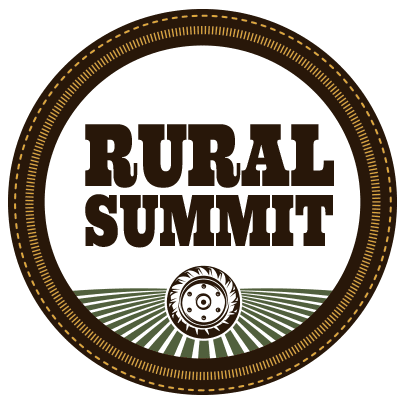by David Herman
Parish Hall was ground zero for the 2019 edition of the Rural Summit. This event brings together a wide array of experts to discuss how to move the businesses in rural Eastern Ontario forward successfully. The event moved along very well, as with the number of speakers, it was essential that the schedule was maintained. The summit was officially opened by our MP, the Honourable Michael Barrett, The Honourable Steve Clark Minister of Municipal Affairs and Housing, as well as NG Mayor Nancy Peckford. Henry Lickers, of the Mohawk Council of Akwesasne, said a blessing on those in attendance and on the event.
There were four different topics each hour, so you had to pick the one that most interested you to attend. My first choice was a presentation by Eric Paysuer, who was representing the Canadian Organic Growers. His talk was titled “How Organic Farming is a Win-Win-Win for farmers, Economic Development and Rural Communities”. He explained that it is not a matter of simply saying that you are an organic farm. There is a certification process by which to become a certified organic farm which can take 15months – 5 years, depending on where you are starting from and your business. For example, if you are applying for a greenhouse operation, and the documentation exists to show no spraying has been carried out within three years, the process is not as long as if you are converting a farm or a couple fields, and they have recently been sprayed.
The costs to become certified are less than most people think. A small farm of about 10 acres will cost less than $1,000. Be aware that the cost may vary depending on which certifying agent you choose, so shop around and do your homework. Navigating the paperwork may well be the hardest part of the process. Testing has shown that organic farming methods may not increase production immediately, but, in time, they provide benefits in production and economy, as well as a healthier product for the consumer.
Next I went to listen to Josh Beimond of Upper Canada Creamery, who spoke on “Key Elements in Agri-food Start-up”. Josh and his brother, who had been off the farm for about 15 years, approached their father about taking over the farm. It was a smaller organic farm, milking less than 50 cows. When they looked into increasing the size of their farm, they found that the cost of good farmland put it out of reach; so they starting looking into how to add value to the product they already had.
They looked at several ideas; one being making cheese. Their mother had been making cheese for the family for years, but there were obstacles to cheese-making like mom did it. They finally hit on yogurt. With this decision came many other questions, such as “where can we make it?” There was no place where their small organic milk operation could be accommodated. They eventually decided to do it themselves. They came up with the plan for the creamery and were able to obtain the financing, partly because the value of their land had, of course, increased with the land values in the area, so they had more collateral behind them when they talked to the lenders.
They now knew where they were going, but there were months of doing paperwork to obtain all the licenses and certifications. Once they started making yogurt, they had to convince stores to carry their product. Our own Jim Beverage, of “B&H Your Community Grocer”, jumped in, as he is inclined to do, and gave them an outlet for their yogurt. Today, they are marketing plain and maple flavoured yogurt, as well as whole milk, and they are finally marketing cheese as well. Their products are available at B&H, The Butcher Block, Metro and other stores. If you can’t find it, ask the dairy manager if he will bring it in.
Luke Gelenyse of Dundas Agri Systems gave an enlightening take on the work that his people do that is allowing today’s farmers to reclaim some quality family time. Cows today have their own version of a Fitbit that counts the number of steps they take each day. The apps monitor and record the amount of milk they produce, and the temperature of the milk, all to ensure the cow is healthy and remains healthy. No farmer wants their livestock not to be healthy. They provide areas to comfortably lie down and relax. The farmer would like to see his cows laying down about half the day.
Cow comfort is critical, because of the importance to both cow and farmer of the cow spending most of the day lying down processing feed into milk. For the cow’s comfort there are also robots that consist of large drum like brushes that the cows walk under and use to scratch that itch that they just can’t quite reach. They actually line up for their turn. When they are being milked by another robot, there may be a mat that provides data on the total weight of the cow, but also the weight distribution on each of their feet, which may indicate a problem with one of the feet. Their feet may be sprayed, cleaning them while they are in the milking parlor. All these robots and monitors are there to allow the farmer to ensure his cows are healthy and happy so they continue to produce safe healthy milk.
Henry Lickers gave a presentation on indigenous methods of agriculture. It was entitled “Respecting Food Sources: Everyone’s Responsibility”. In it, he talked about the respect that their people have for all living things, they used companion planting, in their three main crops, that they refer to as the Three Sisters, which are Corn, Beans and Squash. Their people created a version of the now popular “Raised Beds”, in that they mounded up the ground on the field about three feet high and six feet around. The corn went on the top of the mound, then the beans, and then the squash. Planted together like this, they provided shade, insect control, water retention, and weed control.
Tobacco plays a vital role in indigenous culture, but it was planted, not in the fields, but closer to the edges of the forest. Their tobacco did not grow to be as high as the tobacco that the newcomers to their land now grow. They used their tobacco for medicinal as well as ceremonial purposes. Today, they have seed keepers and in the Spring their people come to get the seeds they need, with the responsibility that at harvest time they will return an equal amount of seeds to the seed keeper.
To end the day, there was a panel discussion on “Cannabis in Canada: Where are we and Where are we going”. The panel was made up of industry insider, Sarah Bain, consultants Michelle McLean and Jackie Choquette, and the Canadian Chamber of Commerce’s Ryan Greer. The panel was moderated by Ivan Ross Vrana. The feeling of the panel was that the legalization of cannabis is not expected to play any kind of defining role in the upcoming election. Another point of agreement was that they feel that hemp will become the major part of the new cannabis industry. Hemp contains less than 1% THC, which is the component that produces the high when smoking cannabis.
Hemp can be used to make clothes, and pharmaceuticals such as pain and nausea relief. It will more likely be used in edibles as well. The panel seemed to feel that, with the onerous licencing regime as it exists, the person with a small farm that would like to enter a boutique type of cannabis operation would be best encouraged to see if they could partner with one of the “big boys” in the cannabis industry. One interesting comment from Sarah Bain was that, since currently the old Kemptville College is only about 50% occupied, it would be a great place to set up a Cannabis Education Centre of Excellence.
The W.B. Barr building was the location for the Trade Show, with Government agencies, insurance companies, farm tax experts, Myers Chev, GMC and others too numerous to mention.
On day two, after the workshops from 9-10:45, there was a walking tour of the College and a bus tour of three varied types of Agri-Food farming operations. The first stop was the Upper Canada Creamery, where the approximately two dozen Agri-Tourists were shown around the creamery, with Josh providing the description of the process of making their yogurt and cheese. They generously provided tastings of their products, and then we had an opportunity to purchase directly from the Creamery.
From there, we wound through the Spring countryside and were shown the plaques commemorating John McIntosh, who discovered McIntosh apples, as well as one marking the site of the last first generation McIntosh apple tree, which died just a few years ago. The McIntosh apple was the most popular apple, certainly in Eastern Canada, if not all Canada, for 100 years.
Back on the road again, we found our way to Mountain Orchards just outside Mountain. Here we took a wagon ride up into the orchard and were given an talk about the operation. When we returned to the store, which they opened to allow us in out of the wind, Shelley proceeded to tell us about the evolution of their Agri-Food business. She provided some hot apple-butter tarts to munch while she talked. Delicious! The farm has become a destination with upwards of 10,000 people visiting on a good day during harvest. She explained that a lot of people do not understand that all the types of apples do not ripen at the same time, and so they come for one particular brand, but they are too early or too late. To help with this their Webpage explains when each variety of apple is ready for picking.
It is important to note that, like most farms, they have a second source of income to help during the times when their crop is not available for sale. Mountain Orchards also is the home of Mountain Mouldings, where they can reproduce pretty much any moulding that you need. Some of these will, of necessity, involve an additional fee, if they do not happen to have the required knives for your particular moulding; but they have a large selection to choose from.
As the afternoon moves on, we make our way back toward Kemptville, but stop first at our final Agra-Food destination, “Blue Gypsy Wines”. They have not been in business a long time, but word is spreading about the quality of their Fruit Wines and Vinegars. They have Cranberry, Blueberry, and Rhubarb, to name but a few. They also have Honey Wine, or Meade, and the two flavours we tried were Honey Chocolate and Honey Chive. A taste for most any palate and taste.
I hope I have shown that the Rural Summit had something for everyone. You do not have to have dirt under your nails, or wear rubber boots. I was not there last year, but, now that I have seen it, I would recommend it to anyone who is interested in our Rural Way of Life. It is great. I think we owe a debt of gratitude to the sponsors and volunteers who have worked so hard to make the event a success.







